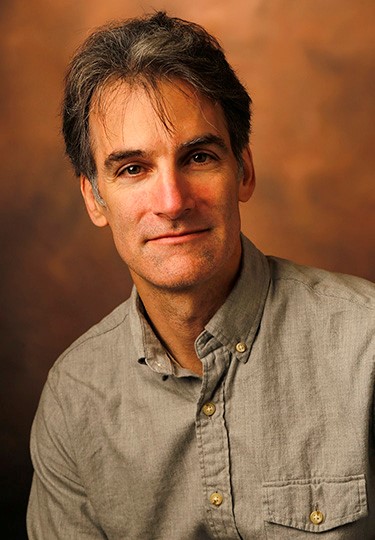Clinical insights into basic visual processes
Organizer(s): Paul Gamlin, University of Alabama at Birmingham; Ann E. Elsner, Indiana University; Ronald Gregg, University of Louisville
Time/Room: Friday, May 18, 2018, 12:00 – 2:00 pm, Talk Room 1
This year’s biennial ARVO at VSS symposium features insights into human visual processing at the retinal and cortical level arising from clinical and translational research. The speakers will present recent work based on a wide range of state-of-the art techniques including adaptive optics, brain and retinal imaging, psychophysics and gene therapy. More…
Vision and Visualization: Inspiring novel research directions in vision science
Organizer(s): Christie Nothelfer, Northwestern University; Madison Elliott, UBC, Zoya Bylinskii, MIT, Cindy Xiong, Northwestern University, & Danielle Albers Szafir, University of Colorado Boulder
Time/Room: Friday, May 18, 2018, 12:00 – 2:00 pm, Talk Room 2
Visualization research seeks design guidelines for efficient visual displays of data. Vision science topics, such as pattern recognition, salience, shape perception, and color perception, all map directly to challenges encountered in visualization, raising new vision science questions and creating a space ripe for collaboration. Four speakers representing both vision science and visualization will discuss recent cross-disciplinary research, closing with a panel to discuss about how vision science and visualization communities can mutually benefit from deeper integration. This symposium will demonstrate that contextualizing vision science research in visualization can expose novel gaps in our knowledge of how perception and attention work. More…
Prediction in perception and action
Organizer(s): Katja Fiehler, Department of Psychology and Sports Science, Giessen University, Giessen, Germany
Time/Room: Friday, May 18, 2018, 2:30 – 4:30 pm, Talk Room 1
Prediction is an essential mechanism enabling humans to prepare for future events. This is especially important in a dynamically changing world, which requires rapid and accurate responses to external stimuli. While it is unquestionable that predictions play a fundamental role in perception and action, their underlying mechanisms and neural basis are still poorly understood. The goal of this symposium is to integrate recent findings from psychophysics, sensorimotor control, and electrophysiology to provide a novel and comprehensive view on predictive mechanisms in perception and action spanning from behavior to neurons and from strictly laboratory tasks to (virtual) real world scenarios. More…
When seeing becomes knowing: Memory in the form perception pathway
Organizer(s): Caitlin Mullin, Computer Science and Artificial Intelligence Laboratory, Massachusetts Institute of the Technology
Time/Room: Friday, May 18, 2018, 2:30 – 4:30 pm, Talk Room 2
The established view of perception and memory is that they are dissociable processes that recruit distinct brain structures, with visual perception focused on the ventral visual stream and memory subserved by independent deep structures in the medial temporal lobe. Recent work in cognitive neuroscience has challenged this traditional view by demonstrating interactions and dependencies between perception and memory at nearly every stage of the visual hierarchy. In this symposium, we will present a series of cutting edge studies that showcase cross-methodological approaches to describe how visual perception and memory interact as part of a shared, bidirectional, interactive network. More…
Visual remapping: From behavior to neurons through computation
Organizer(s): James Mazer, Cell Biology & Neuroscience, Montana State University, Bozeman, MT & Fred Hamker, Chemnitz University of Technology, Chemnitz, Germany
Time/Room: Friday, May 18, 2018, 5:00 – 7:00 pm, Talk Room 1
In this symposium we will discuss the neural substrates responsible for maintaining stable visual and attentional representations during active vision. Speakers from three complementary experimental disciplines, psychophysics, neurophysiology and computational modeling, will discuss recent advances in clarifying the role of spatial receptive field “remapping” in stablizing sensory representations across saccadic eye movements. Participants will address new experimental and theoretical methods for characterizing statiotemporal dynamics of visual and attentional remapping, both behavioral and physiological, during active vision and relate these data to recent computational efforts towards modeling oculomotor and visual system interactions. More…
Advances in temporal models of human visual cortex
Organizer(s): Jonathan Winawer, Department of Psychology and Center for Neural Science, New York University. New York, NY
Time/Room: Friday, May 18, 2018, 5:00 – 7:00 pm, Talk Room 2
How do multiple areas in the human visual cortex encode information distributed over time? We focus on recent advances in modeling the temporal dynamics in the human brain: First, cortical areas have been found to be organized in a temporal hierarchy, with increasingly long temporal windows from earlier to later visual areas. Second, responses in multiple areas can be accurately predicted with temporal population receptive field models. Third, quantitative models have been developed to predict how responses in different visual areas are affected by both the timing and content of the stimulus history (adaptation). More…

 Kenneth C. Catania
Kenneth C. Catania